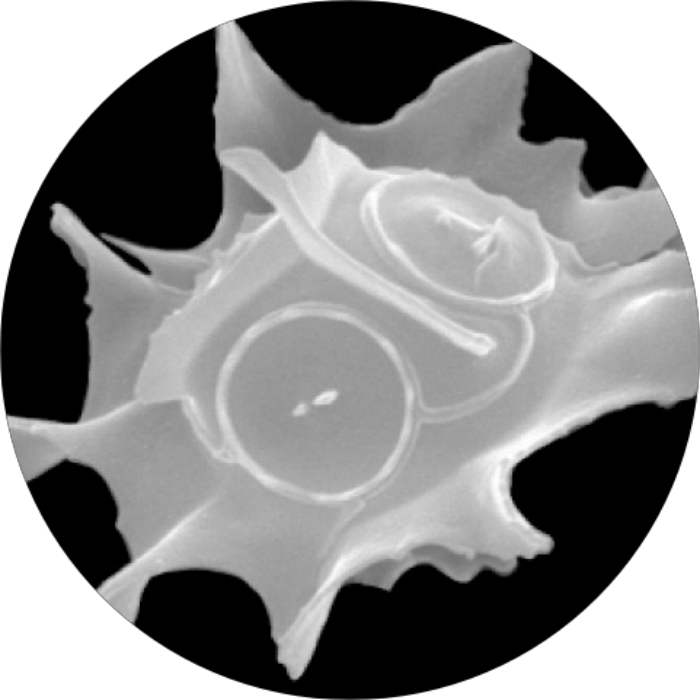Orders of newly sequenced species:
Parmales
Basic information from Wikipedia:
| Kingdom | Clade | APG IV | Classification |
|---|---|---|---|
| Plantae | Parmales | Parmales | NA |
The Parmales are an order of marine microalgae within the Bolidophyceae class. They are found worldwide and characterized by a cell wall composed of 5-8 interlocking silica plates with distinct forms. They were initially thought to be loricate choanoflagellates but were shown to be a separate phyla entirely upon the discovery of chloroplasts, placing it among the photosynthetic stramenopiles.The group is divided into two distinct morphologies- the naked and mobile bolidophyte form and the non-mobile and silica-plate covered parmalean form. The bolidophyte form lacks silica plates and has two unequal flagella inserted ventrally, vaguely reminiscent of Chlamydomonas. The parmalean form is similar to the diatoms as it is coated in silicate plates. These silicate plates are used to divide the Parmales into separate genera based upon the number and location of the siliceous plates. Unlike the diatoms, the Parmales are able to grow in silica-limiting environments because the synthesis of the silica plates is not directly connected to growth or reproduction.The Parmales actively feed on nanophytoplankton such as Prochlorococcus and Synechococcus and are one of the most important grazers on these cyanobacteria in oligotrophic waters. This heterotrophy serves as an important step in the foundation of the microbial loop.

Partial Species:





